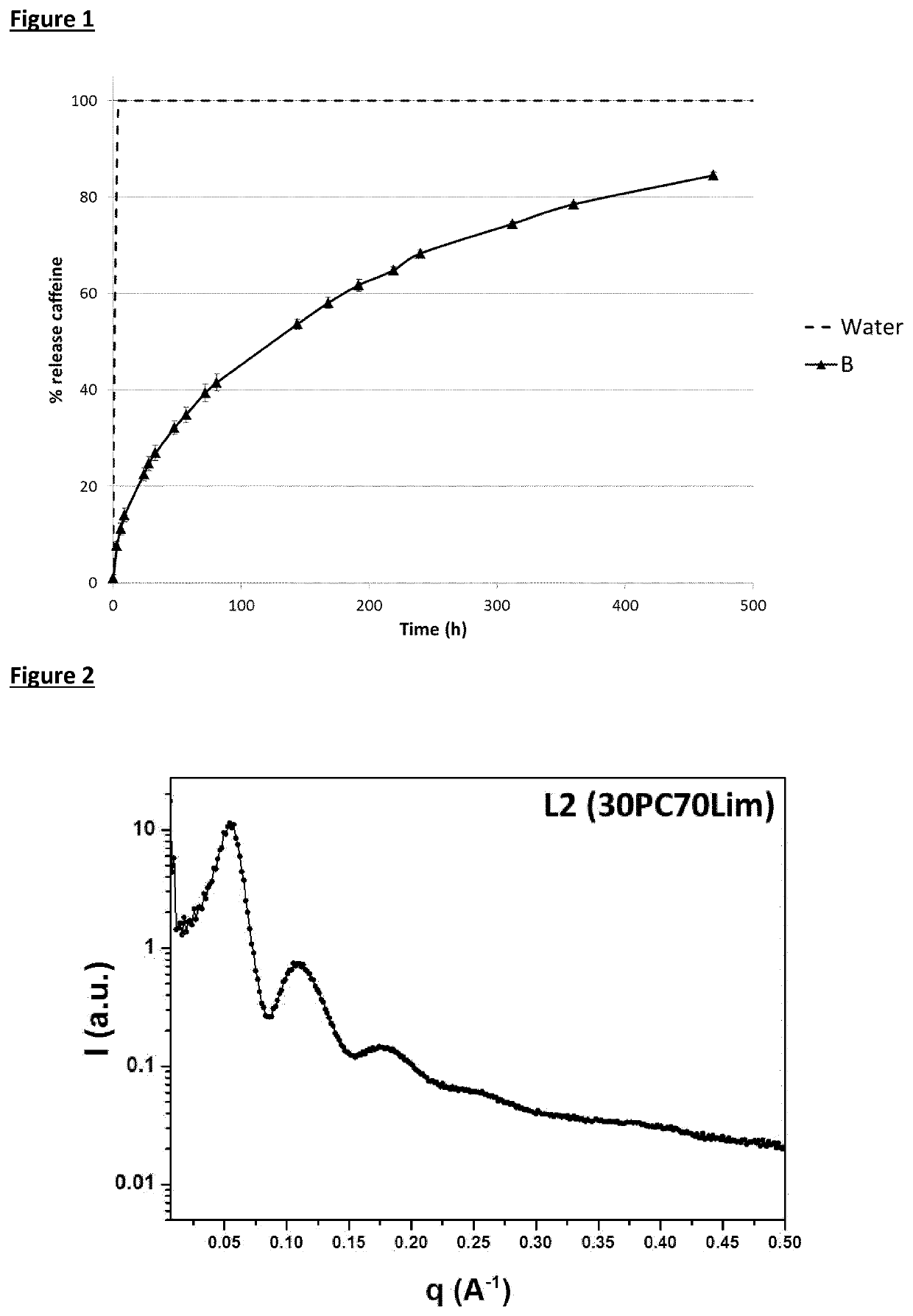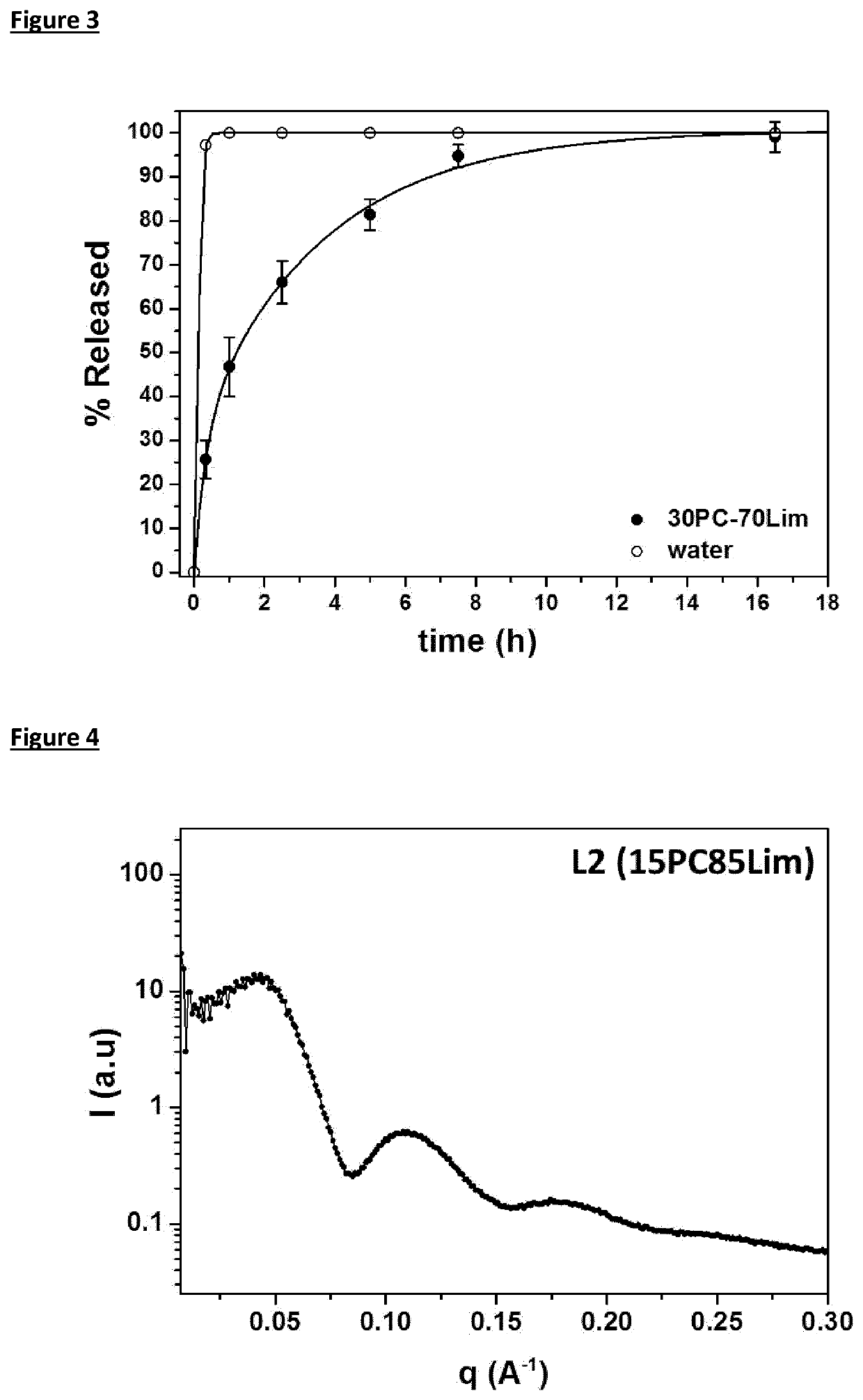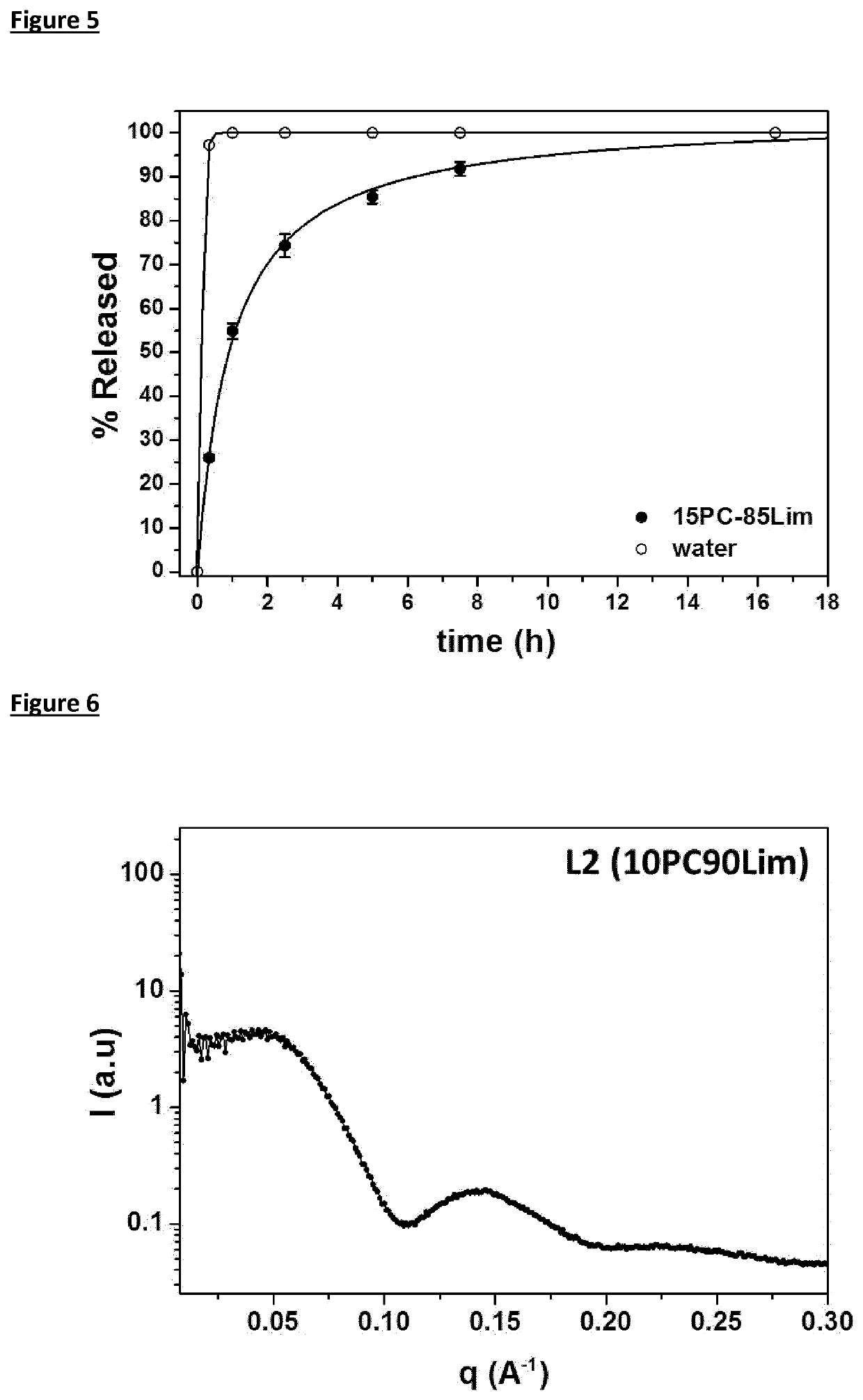Controlled release of caffeine
a technology of controlled release and caffeine, applied in the field of edible compositions, can solve the problems achieve the effects of slow and controlled caffeine release, sustained caffeine release, and diffusion ra
- Summary
- Abstract
- Description
- Claims
- Application Information
AI Technical Summary
Benefits of technology
Problems solved by technology
Method used
Image
Examples
example 1
Release from Phosphatidylcholine-Limonene System
[0040]Soybean phosphatidylcholine (PC) was purchased from Cargill, Germany, under the product name Epikuron 200. (R)-(+)-limonene and caffeine were purchased from Sigma-Aldrich. Mesophases (0.3 g) were prepared in Pyrex tubes with the following composition:
[0041]
SampleαoilWater content (wt. %)A3628B5535
Where αoil is the ratio of phospholipid to the total weight of oil and phospholipids expressed as a percentage. Caffeine was dissolved in MilliQ water at 1% to form an aqueous phase. The PC and limonene were weighed into the tube and the mixture homogenized by vortexing. After a few hours equilibration, the aqueous phase was added and the tube was vortexed. After 2 days equilibration, the tubes were centrifuged at 3000 rpm for 5 minutes to obtain a flat surface. The tubes were kept in the dark.
[0042]Release studies were performed at room temperature in triplicates with an additional blank (non-loaded) sample. MilliQ water was used as a r...
example 2
Release from Phosphatidylcholine-Limonene Liquid Systems with the Addition of Different Percentage of Coffee Oil
[0053]Soybean phosphatidylcholine (Epikuron 200), (R)-(+)-limonene and caffeine were employed as in Example 1, while different percentages of coffee oil were added in the following experiments.
[0054]Mesophases (0.3 g) were prepared in Pyrex tubes with the following composition:
[0055]
SampleαPCαCOWater content (wt. %)C30010D1505E1005F15105G10505
Where αPC is the ratio of phospholipid and αCO is the ratio of coffee oil to the total weight of oil, phospholipids and coffee oil respectively, expressed as a percentage.
[0056]Sample preparation, release studies, caffeine detection and SAXS measurements were performed in the same manner as in Example 1. In this case, being the mesophase liquid, the release studies were performed slightly differently because the oil phase was on the top of the water phase. The water phase, which is the release receiving solution, was extracted each ti...
PUM
| Property | Measurement | Unit |
|---|---|---|
| weight | aaaaa | aaaaa |
| weight | aaaaa | aaaaa |
| weight | aaaaa | aaaaa |
Abstract
Description
Claims
Application Information
 Login to View More
Login to View More - R&D
- Intellectual Property
- Life Sciences
- Materials
- Tech Scout
- Unparalleled Data Quality
- Higher Quality Content
- 60% Fewer Hallucinations
Browse by: Latest US Patents, China's latest patents, Technical Efficacy Thesaurus, Application Domain, Technology Topic, Popular Technical Reports.
© 2025 PatSnap. All rights reserved.Legal|Privacy policy|Modern Slavery Act Transparency Statement|Sitemap|About US| Contact US: help@patsnap.com



